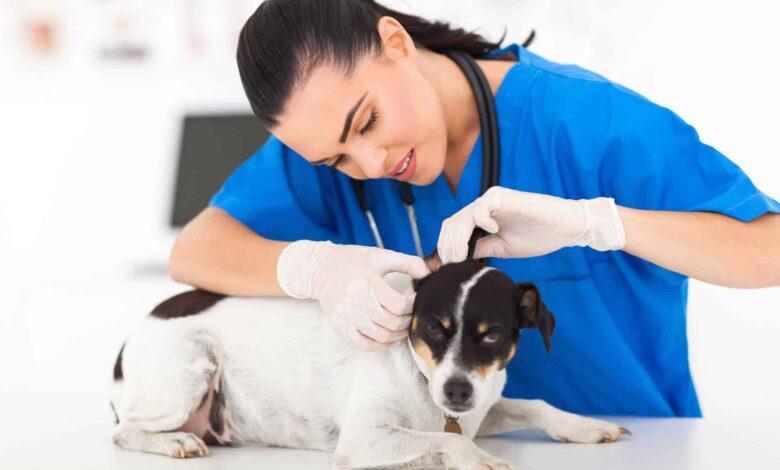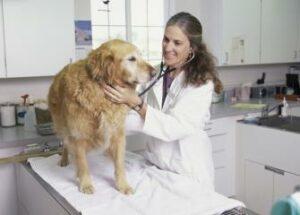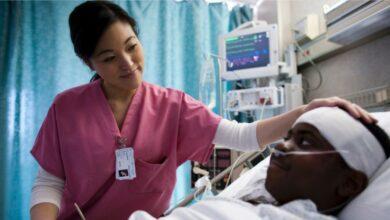
Veterinarian Job Description, Roles/Responsibilities, and Qualifications
Veterinarian job description – A veterinarian is a medical expert. Read more about the veterinarian job description, roles/responsibilities, and qualifications.
A veterinarian is a medical expert who handles animal injuries and illnesses. They employ medical instruments and x-ray machines to properly diagnose and treat the animals. They do emergency procedures in some cases. Overall, they provide the same services to dogs as physicians do to their human counterparts.
👉 Relocate to Canada Today!
Live, Study and Work in Canada. No Payment is Required! Hurry Now click here to Apply >> Immigrate to CanadaVeterinarians treat pets, horses, wildlife, and farm animals. Some veterinarians specialize in the care of fish, marine mammals, and invertebrates. A veterinarian can also teach in educational institutions, conduct research, or work in the food safety industry. Also known as a veterinary surgeon or veterinarian.
Read Also: Personal Assistant (PA) Job Description, Roles/Responsibilities, and Qualifications
Veterinarians are comparable to human doctors in that they labor to care for the health of many types of animals. Some veterinarians focus on smaller animals, such as pets, while others may focus on livestock or exotic species, such as zoo animals. Some veterinarians also serve to protect public health by ensuring that food animals are well-cared for and safe to eat. In this section, we go over certain parts of a veterinarian’s job description, such as what they perform and how much they earn. Veterinarian Job Description
Veterinarians treat animal injuries and illnesses. Before choosing a treatment strategy, these professionals evaluate and diagnose animals using lab testing and medical technologies such as EKG, ultrasound, and x-ray machines. They also undertake aminal research and do preventative and emergency operations. Veterinarians normally work in a private veterinary clinic or hospital, though some may also work in zoos or travel between offices and farms and ranches.
Vets are also in charge of advising and educating pet owners on their animal’s fundamental needs and treatments, as well as prescribing medication and providing advice on how to best care for them. Successful veterinarians must have animal compassion, solid decision-making abilities, and excellent interpersonal skills.
A veterinarian, or Vet, is an animal doctor who diagnoses and treats animals who are sick, injured, or require routine care. Their responsibilities include advising humans on proper pet care, dispensing medication, and performing surgery on animals.
Veterinarians treat animal injuries and diagnose and treat ailments. They provide care for animals by performing surgery, administering tests, prescribing medication, treating wounds and other injuries, and administering immunizations. They promote the well-being of a wide range of domesticated animals while conforming to veterinary-specific ethical norms.
A veterinarian, also known as a vet, is a medical expert who is in charge of caring for sick or injured animals. They also do routine check-ups on animals, particularly after surgeries and other treatments, and may perform laboratory testing, euthanize animals, and provide preventative care. Information Guide Nigeria
👉 Relocate to Canada Today!
Live, Study and Work in Canada. No Payment is Required! Hurry Now click here to Apply >> Immigrate to Canada
Responsibilities of a Veterinarian
- Examine animals and determine their health
- diagnosing diseases and determining the optimal treatment
- Treat wounded animal wounds
- Perform dental, eye, and orthopedic surgical procedures
- Vaccinate animals for disease prevention
- Neuter and spay cats and dogs as needed
- Prescribe medication
- Advise pet owners on proper diet, preventative care, and overall care
- Perform occasional house visits in case of an emergency
- Update client records
- Assessing and examining patients in order to diagnose their medical conditions.
- Performing laboratory tests on specimens to diagnose diseases.
- Performing imaging and ultrasound diagnostics.
- Perform surgical procedures, dress and cure wounds, and prescribe medication.
- Promoting preventative care by advocating and giving routine vaccines, as well as educating clients on healthy diet and lifestyle choices for their pets.
- Improving the dental health of patients by examinations, cleaning, and extraction of teeth.
- Euthanasia of patients
- Compliance with veterinary ethics and applicable laws, regulations, and procedures.
- Maintaining medical records for patients.
- Maintains animal health through the diagnosis and treatment of illnesses and injuries.
- Examines small and/or large animals to ascertain the type of disease or injury.
- Restores animal health through surgical or medical treatment.
- By evaluating animals and administering vaccines, rabies, brucellosis, and other diseases are prevented.
- Promotes animal health by counseling pet owners on proper cleanliness, nutrition, and general care.
- Documents actions through completing and revising forms, reports, and animal records, as well as notifying public health officials of disease outbreaks.
- Enhances the reputation of the clinic by assuming responsibility for completing new and diverse requests and seeking opportunities to add value to job successes.
- Transport mobile clinic vans to farms in order to treat and/or prevent health problems.
- Specialize in a specific therapy modality, such as dentistry, pathology, nutrition, surgery, microbiology, or internal medicine.
- Conduct inspections and diagnostic tests on horses, sheep, and other animals to detect the presence of infectious diseases.
- Plan and implement nutrition and reproduction plans for animals.
- Investigate diseases that animals may be susceptible to.
- Evaluate the cleanliness and suitability of animal living facilities.
- Animal testing is used to determine the effects of pharmacological therapies, antibiotics, and new surgical methods.
- Determine the causes of animal fatalities by conducting postmortem research and analyses.
- Perform administrative tasks including organizing appointments, taking client payments, and maintaining business records.
- Farms are directed toward the whole operations of animal hospitals, clinics, and mobile services.
- Care for a variety of animals or specialize in a specific type, such as horses or exotic birds.
- Exterminate animals.
- Establish and implement quarantine and testing processes that comply with applicable government requirements and prevent the spread of disease to other animals and humans.
- Advise animal owners on the hygienic practices, nutrition, and general care required to promote animal health.
- Inform the public about diseases that can be transmitted between animals and people.
- Train and oversee employees who care for and handle animals.
- Vaccinate animals against diseases including rabies and distemper.
- Collect for examination and study body tissue, excrement, blood, urine, and other bodily fluids.
- Utilize diagnostic equipment, such as x-ray and ultrasound machines, and evaluate the produced images.
- Prescribe medications, dress wounds, execute surgical procedures, and set bones to treat sick or injured animals.
- Inform the public about diseases and infections that can be transmitted between animals and humans.
- Promote animal health and well-being by instructing animal owners on sanitation, feeding, and general care.
- Actions are recorded through documenting and updating forms, reports, animal records, and disease reports to public health officials.
- Ensure adherence to veterinary practices, ethics, regulations, and applicable laws.
- Employ diagnostic equipment such as ultrasound and x-ray devices and evaluate the resulting images.
- Establish or implement quarantine or testing measures to combat the spread of disease among humans or other animals, in accordance with governing legislation.
- When they deem it necessary, euthanize animals, such as in cases of a terminal illness.
- Diagnoses animals and prescribes medicine
- Surgical procedures and vaccines 10 Best Hoverboard Scooters and Accessories in Nigeria and their Prices
- Animals are sterilized, spayed, and euthanized.
- Assesses the health of the animals under their care.
- Maintains individual patient records
- Educates pet owners on correct animal care
- Manage wildlife rehabilitation programs for native species, including licensing for the technique at the state and federal levels.
- Advise researchers submitting grant applications to the NIH and NSF on animal surgery protocols.
- Support rabies, vaccination, spay/neuter, and pet adoption programs of community organizations and humane society organizations.
- Serve as a veterinarian.
- A full-service hospital, with USDA accreditation
- Perform surgical procedures with a CO2 laser.
- Scan patient documents into the EMR.
- Ability with CO2 laser for surgical procedures.
- Work as an associate in an AAHA-accredited, high-volume hospital.
- Develop and provide food safety and SSOP training for facility management.
- Monitor animal usage processes and facilities to ensure adherence to NIH guidelines.
- Present studies on poultry research at national veterinary scientific meetings (AVMA annual meeting )
- Develop and facilitate weekly FSIS food safety meetings with the establishment.
- Participate in preparing the practice for its successful AAHA inspection.
- Prepare study protocols and reports to be submitted to the USDA in support of biologics licensing.
- Educate the public and provide guidance to other spay/neuter organizations regarding HQHV (high quality, high volume) spay/neuter.
- Perform high-volume, high-quality spay and neuter procedures on cats for a private, non-profit spay/neuter organization.
- Supervise GLP and non-GLP research activities in the preclinical study of companion animals in BSL-2 barrier and standard colony settings. JAMB Portal
- In end-of-life scenarios, provide compassionate animal care and emotional support to pet owners.
- Supervise and instruct prospective veterinarians, technicians, and assistants as they complete their school programs.
- Expertise in diagnostics and emergency surgery.
- Perform chemotherapy and surgery on soft tissue.
- Refer selected patients to the appropriate veterinary practitioner for more specific diagnoses and treatments.
- Provide emergency medical and surgical care for both incoming and hospitalized companion animals.
- Conduct GLP safety research on formulations of fluoroquinolone antibiotics.
- Communicate with affiliated veterinarians and researchers regarding the diagnosis, prognosis, and treatment plans. 15 Best Photochromic Glass and their Prices in Nigeria
- Assist in conveying the diagnosis and treatment plan to the veterinary medical team and the client.
- As necessary, provide both general practice and emergency relief services to several offices.
- Perform emergency surgical procedures, including GDV, wound, chest tube insertion, and abdominal exploratory procedures. Good Morning My Love Message
- Among the advanced services are enucleation, fracture fixation, Ultrasonography, chemotherapy, and others.
Read Also: Portfolio Manager Job Description, Roles/Responsibilities, and Qualifications
Roles of a Veterinarian
Veterinarians often work in animal hospitals and clinics, but they may also provide ordinary animal care as staff Veterinarians at a zoo, ranch, farm, stable, aquarium, or laboratory. They are experts in animal diseases and utilize their understanding of animal anatomy to identify and correct health problems. Veterinarians create animal care plans and teach pet owners how to help their animals heal. Among other things, they order lab tests, assist with deliveries, provide dental cleanings and teeth extractions, sew up wounds, and treat infections. Veterinarians can also execute humane euthanasia and console bereaved pet owners.
Read Also: Resident Assistant Job Description, Roles/Responsibilities, and Qualifications
Veterinarian job qualifications/skills
- Experience working as a veterinarian, veterinary technician, or veterinary assistant
- Experience doing various types of procedures, immunizations, and animal health checks
- Understanding of medical equipment (such as X-ray machines) and anesthetic procedures
- Problem-solving abilities NYSC Portal
- Excellent communication skills, including the ability to explain medical concepts and symptoms in layman’s terms.
- In case of an emergency, you must be available to work late or weekend shifts.
- Patience and a passion for animals
- DVM (Doctor of Veterinary Medicine) Romantic Love Message
Read Also: Assistant Property Manager Job Description, Roles/Responsibilities, Qualifications
Veterinarian salary structure in the USA
How much does a Vet in the United States make? In the United States, the average salary for a veterinarian is $103,182, but the range is usually between $81,040 and $130,940. Salary ranges can be very different depending on many important factors, such as education, certifications, additional skills, and the number of years you have worked in your field.
We hope that this article will help to make an informed decision.
Check JAMB RESULT
Check and Confirm: How much is Dollar to Naira








